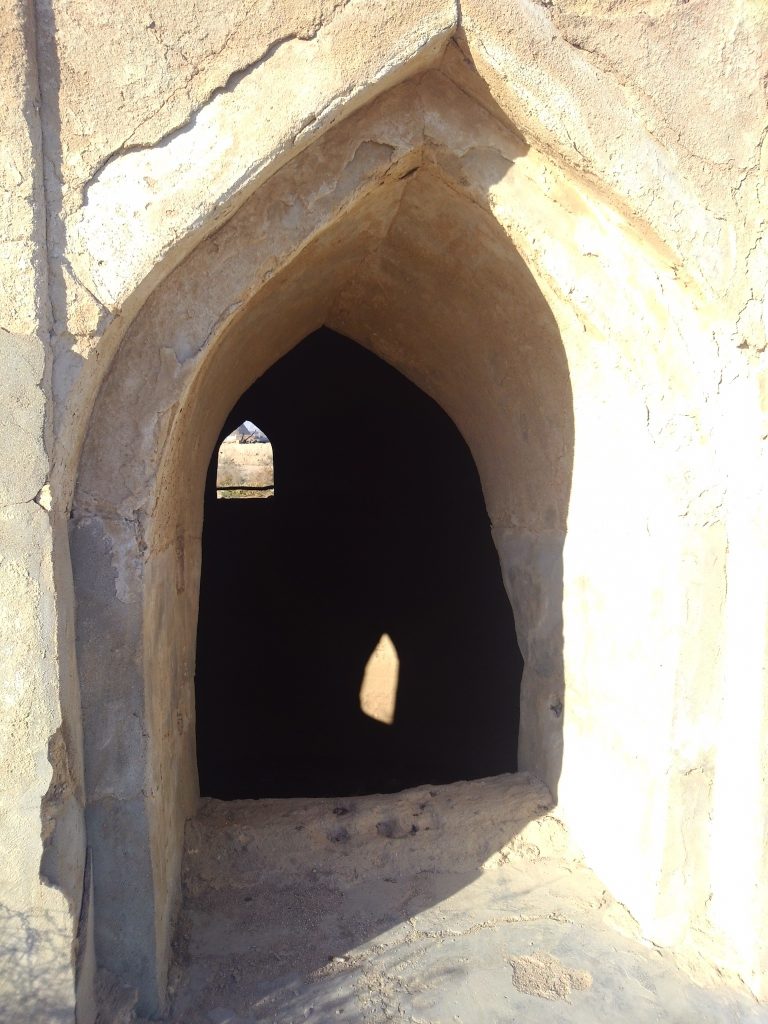As the sun set, and a hush descended on Bandar Kong, the women in their rose-colored dresses made last minute preparations for Hana Bandan. It was “Henna Night,” and each decoration marking this festive “new beginning,” the bliss of marriage, had to be meticulously arranged throughout the house. Wearing an exquisite, embroidered dress, a green one to symbolize the heavenly fruits of paradise, the bride finally appeared. A hopeful smile on her face, she was ready for this night, and its traditional Islamic rites of passage–the dying of skin, hair, and fingernails that would bring health and happiness.

As special music (Suru) echoed through the rooms, the bride was reminded that applying the henna could take up to four nights. In most Iran cities the celebrations accompanying the henna rituals, like the men dancing Xeizaran (or wood, to symbolize the gentleness of the peace-loving people in this region) or eating a cow presented to the bride’s parents, last a much shorter time. In Bandar Kong, a town in far southern Iran on the Persian Gulf, everything is far different than in cosmopolitan places like Shiraz or Tehran. There is a reverence for the past, a glorification of Islam’s most treasured virtues.

Relatively isolated from those cities, Bandar Kong (or Kong) is a maze of alleyways and arched buildings with intricately embellished doorways. Once a thriving port, it is still a place to embrace the richness of Iran’s cultural wealth–basket weavers, hand-stitched tapestries, and the detailed artistry of henna. A guest at the wedding, I wanted to unlock Kong’s secrets, and discover henna’s sanctified blessings. I noticed that the bride was too excited to eat, to appreciate the cow’s head the groom’s family brought to the party. She greeted a few women, all wearing green chandors, and showed them the gold jewellery the groom gave to her.

I couldn’t see her face, for it was covered with lace fabric. But there was an aura about her. A feeling conveyed by her purposeful strides that she had found “shelter,” that the green would protect her. A few women grasped her arms, and guided her towards a room filled with mirrors. Sparkling in refracted light–these hints of purity and belief–she seemed like a fairy tale princess, at peace with life. Now she would be further adorned with henna, and this ritual would assure her future. She would prosper with children, love, a happy life.

That was Kong, a reassuring place during these unsettling times of COVID, and Trump’s wild screeching. Kong is the past, but still a comforting revisiting of rituals. Its alleyways were confusing, yet still they marked a clear path. To faith. And to beauty. The decorations around me were true art, bursts of color and detailed ornamentation that stirred my imagination.

Seeing so much richness, I wondered, ‘would I devote four days to henna, watching an artist stain my body with this enriching dye’? Once the bride disappeared into that lit room with green quilts and gold-threaded embroideries, I was left with that mystery. But I did know what I would do after the wedding. Alone in an enchanted town dotted with doorways, all locked and enticing like treasure chests, I would try to peer into these passageways. To discover more stories.






